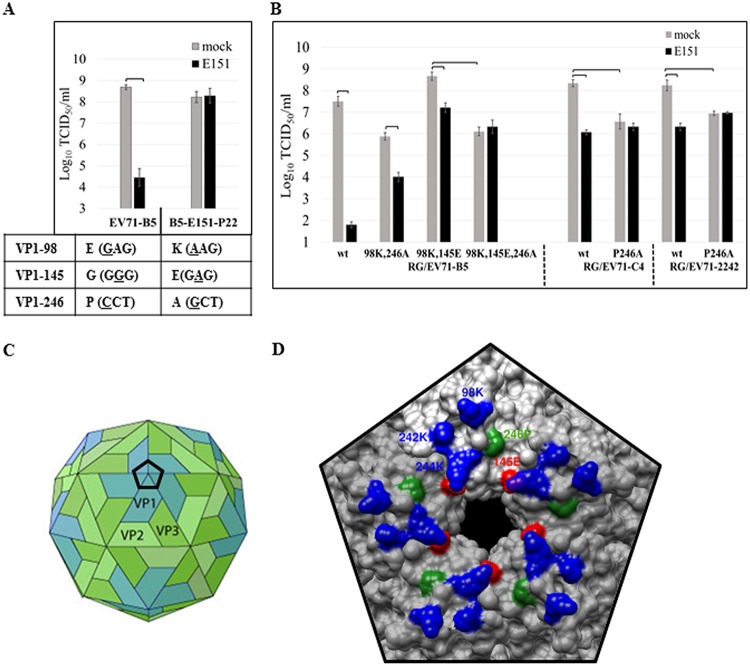FIG 5.
Selection and characterization of E151-resistant EV71 mutants. (A) EV71-B5 was passaged in RD cells in the presence of E151. The 22nd-passage virus EV71-B5res (EV71-E151-P22) exhibited complete E151 resistance with 3 amino acid changes, E98K, G145E, and P246A, in VP1 compared to the sequence of the parental wild-type EV71-B5. Nucleotide mutations are underlined. (B) VP1-P246A conferred total E151 resistance on the EV71 KE (VP1-98K,145E) strains. P246A was introduced into EV71-B5, EV71-C4, and EV71-2242 strains by reverse genetics (RG). The titers of the 2nd-passage viruses were determined in RD cells in the absence or presence of 100 μM E151. The average values ± standard errors of triplicated experiments are shown. Brackets indicate P values of <0.01 (one-way ANOVA with Dunnett’s posttest). (C) Cartoon image of the icosahedral EV71 virion with VP1 (blue), VP2 (light green), and VP3 (green) on viral surface (adapted from ViralZone [https://viralzone.expasy.org/; Swiss Institute of Bioinformatics] under a Creative Commons CC BY-NC-ND 4.0 license). The regular black pentagon indicates the vertex of the 5-fold axis formed by a VP1 pentamer. (D) Three-dimensional surface of the vertex of an EV71 KE strain (PDB ID 3VBS). Amino acids at VP1-145 (red) and VP1-246 (green) are critical for E151 binding to prevent EV71 infection. VP1-246P is conserved, while VP1-145E is dominant. EV71 strains with VP1-145G/Q are highly sensitive to E151, whereas strains with VP1-145E have low sensitivity to E151. Positively charged VP1-98K, VP1-242K, and VP1-244K (blue) might also interact with E151 and other azo food dyes through electrostatic attraction.

